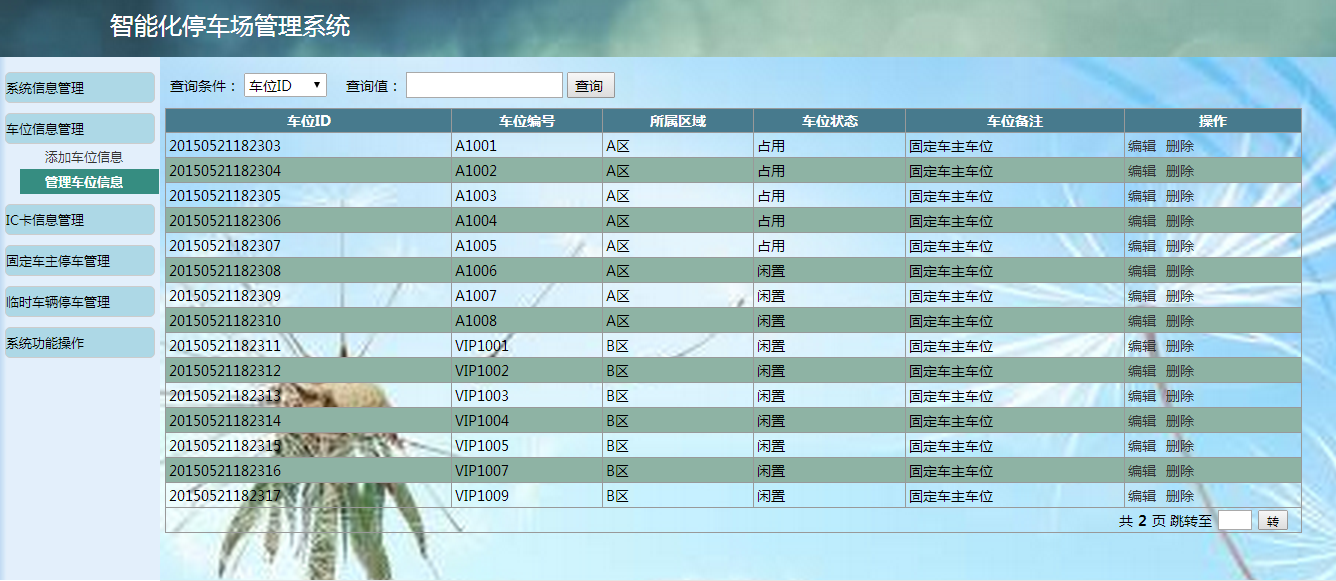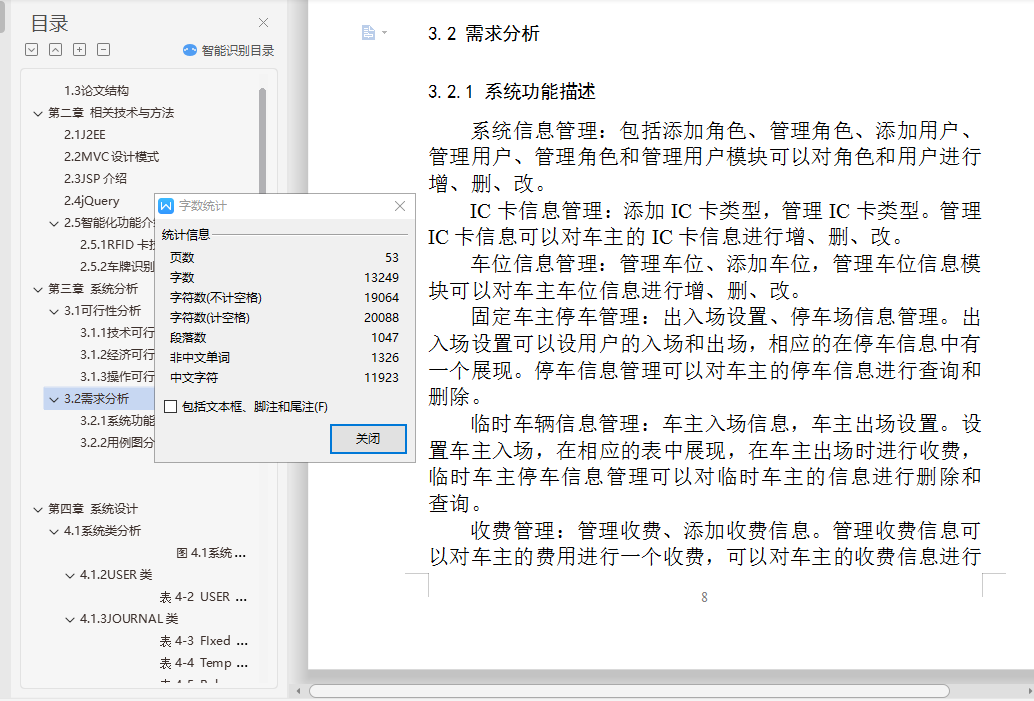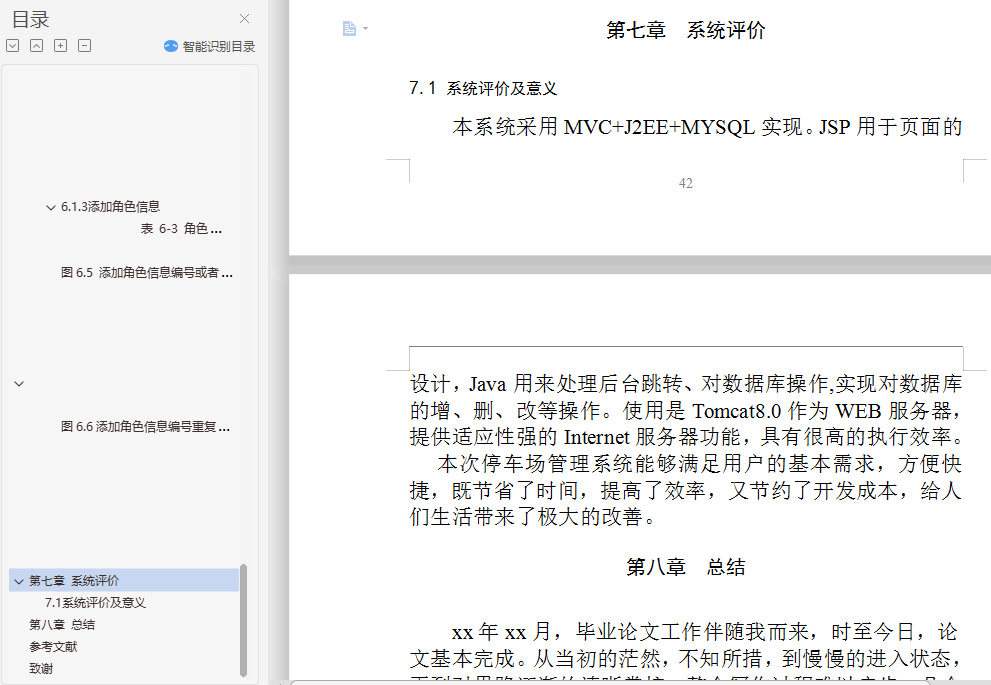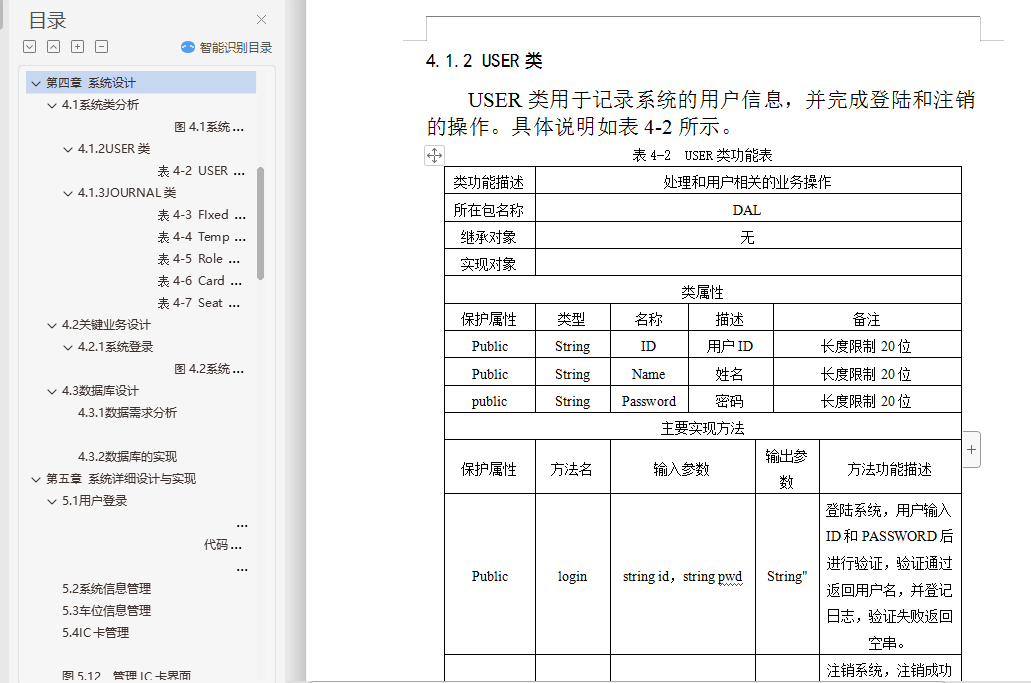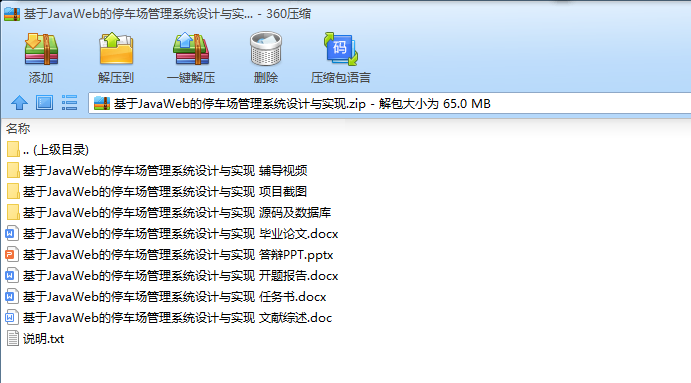摘要
随着现代社会的快速发展,人民生活水平快速提高,汽车的数量飞速增加,在生活小区、办公场所、商场、景点等地方,停车难问题也日益突出。为了解决停车难的问题,结合一些当前的停车场模式和现状开发出本停车场管理系统。主要功能包括场内车辆管理和后台数据库管理,其中场内车辆管理又分为车位管理模块、收费管理模块、停车场数据管理模块、系统功能操作模块、用户信息管理模块等。我们从系统的功能实现和设计方面阐述了管理系统软件的开发过程。
系统采用了B/S架构,Tomcat8.0作为运行服务器,基于J2EE标准。Eclipse4.6开发环境,数据库采用Mysql-5.5.37。开发过程利用MVC开发模式,层次分明。成功实现了该系统。试运行结果表明,该系统具有良好的性能和扩展性,较高的响应速度和效率,该系统符合实际的停车场管理系统,为停车场管理供一个快速,简单规范的管理平台。这对提高信息化程度,降低人力成本有着重要的意义。
关键词:J2EE;B/S结构;Mysql;MVC;
ABSTRACT
With the rapid development of modern society, people's living standards increasing quickly, the number of vehicles increased rapidly, the living community, office space, shopping malls, scenic spots, such as local, parking problem is increasingly outstanding.In order to solve the problem of parking difficulty, combined with some parking mode and the status quo of the current developed this parking lot management system.Main functions include floor vehicle management and background database management, including internal vehicle management is divided into parking management module, data management module, system of parking charge management module, function module, user information management module, etc.We this paper expounds the realization of the function of the system and the design management system software development process.
System USES the B/S architecture, Tomcat8.0 as to run the server, based on the J2EE standard.Eclipse4.6 development environment, using Mysql database - 5.5.37.Development process using MVC development mode, distinct.The system is implemented.Trial operation results show that the system has good performance and scalability, high response speed and efficiency of the system in accordance with the actual car park management system, for parking management for a rapid, simple and standardized management platform.This to improve the informationization level, reduce the manpower cost has an important significance.
Keywords:J2EE; B / S structure;Mysql;MVC;
目录
第一章 绪论 1
1.1 系统研究背景和意义 1
1.2 研究现状 1
1.3 论文结构 3
第二章 相关技术与方法 4
2.1 J2EE 4
2.2 MVC设计模式 5
2.3 JSP介绍 5
2.4 jQuery 5
2.5 智能化功能介绍 6
第三章 系统分析 6
3.1 可行性分析 6
3.2 需求分析 8
第四章 系统设计 11
4.1 系统类分析 11
4.2 关键业务设计 15
4.3 数据库设计 16
第五章 系统详细设计与实现 22
5.1 用户登录 22
5.2 系统信息管理 24
5.3 车位信息管理 27
5.4 IC卡管理 30
31
图5.12 管理IC卡界面 31
5.5 临时车主管理 32
32
5.6 固定车主管理 34
34
图5.20固定车主流程图 35
5.7 收费管理 35
管理收费信息如图5.21所示: 35
35
图5.21管理收费信息 35
5.7 打印管理 35
图5.22打印信息 36
5.8系统功能操作 36
第六章 系统测试 36
6.1 系统测试概况及用例 37
42
第七章 系统评价 42
7.1 系统评价及意义 42
第八章 总结 42
参考文献 44
致谢 46





